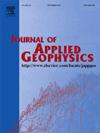利用深度学习生成缺失测井数据:CNN-Bi-LSTM方法
IF 2.2
3区 地球科学
Q2 GEOSCIENCES, MULTIDISCIPLINARY
引用次数: 0
摘要
测井数据通常在钻井过程中收集,这不仅成本高,而且耗时长。此外,由于仪器损坏、井眼条件差、测井不完善等原因,测井数据普遍存在失真,导致数据丢失,导致解释不佳。缺失的测井数据可以使用深度学习方法从现有/可用的井眼测井中检索。在本研究中,我们提出了一种具有全连接层的卷积双向长短期记忆(CNN-Bi-LSTM)方法,该方法可以成功预测Krishna Godavari盆地两个地点(NGHP-01-14和NGHP-01-06)的缺失测井数据。在NGHP-01-14中,CNN-Bi-LSTM利用同一NGHP-01-14站点的密度和伽马日志来预测s波日志。然而,在NGHP-01-06中,声波测井是使用附近NGHP-01站点的不同测井曲线来预测的。该方法可靠地提取出沿井深方向测井曲线的重要特征,有助于预测缺失数据和井中无法获得的测井曲线。通过误差度量来计算预测数据的精度,并将使用CNN、Bi-LSTM和ANN网络预测的日志结果进行比较,以确定所提出方法的有效性。网络预测NGHP-01-14剪切波对数的MSE值为0.0025,CNN、Bi-LSTM和ANN预测的MSE值分别为0.003、0.0045和0.0084。CNN-Bi-LSTM、CNN、Bi-LSTM和ANN对NGHP-01-06的声波测井预测误差值分别为0.0025、0.004、0.005和0.0065。网络结果表明,该方法能够成功有效地预测缺失日志。本文章由计算机程序翻译,如有差异,请以英文原文为准。
Generation of missing well log data with deep learning: CNN-Bi-LSTM approach
Well log data is generally collected by the drilling process, which is associated with huge costs and is also time taking. Furthermore, distorted data are widespread in well logs due to instrument damage, poor borehole conditions, imperfect logging, and so on, causing data loss leading to poor interpretation. The missing well log data can be retrieved using deep learning methods from the existing/ available borehole logs. In this study, we propose a Convolutional Bidirectional Long short-term memory (CNN-Bi-LSTM) with fully connected layers that could successfully predict the missing log data for two sites in the Krishna Godavari basin, namely, NGHP-01-14 and NGHP-01-06. In NGHP-01-14, the CNN-Bi-LSTM was employed to predict the S-wave log using the density and gamma logs from the same NGHP-01-14 site. Whereas, in NGHP-01-06, the sonic log is predicted using different logs from the nearby NGHP-01 sites. This method reliably extracts the important features in the logs along the depth of the borehole, which helps to predict the missing data and also the logs that are not available in the well. The accuracy of the predicted data is calculated with an error metric, and the log predicted using CNN, Bi-LSTM, and ANN network results are compared to establish the efficacy of the proposed method. The MSE value of the predicted shear wave log of NGHP-01-14 from the proposed network is 0.0025, and from CNN, Bi-LSTM and ANN are 0.003, 0.0045 and 0.0084, respectively. The error values of the predicted sonic log of NGHP-01-06 from CNN-Bi-LSTM, CNN, Bi-LSTM, and ANN are 0.0025, 0.004, 0.005, and 0.0065, respectively. The outcomes from the network establish that the proposed method predicts the missing log successfully and efficiently.
求助全文
通过发布文献求助,成功后即可免费获取论文全文。
去求助
来源期刊

Journal of Applied Geophysics
地学-地球科学综合
CiteScore
3.60
自引率
10.00%
发文量
274
审稿时长
4 months
期刊介绍:
The Journal of Applied Geophysics with its key objective of responding to pertinent and timely needs, places particular emphasis on methodological developments and innovative applications of geophysical techniques for addressing environmental, engineering, and hydrological problems. Related topical research in exploration geophysics and in soil and rock physics is also covered by the Journal of Applied Geophysics.
 求助内容:
求助内容: 应助结果提醒方式:
应助结果提醒方式:


